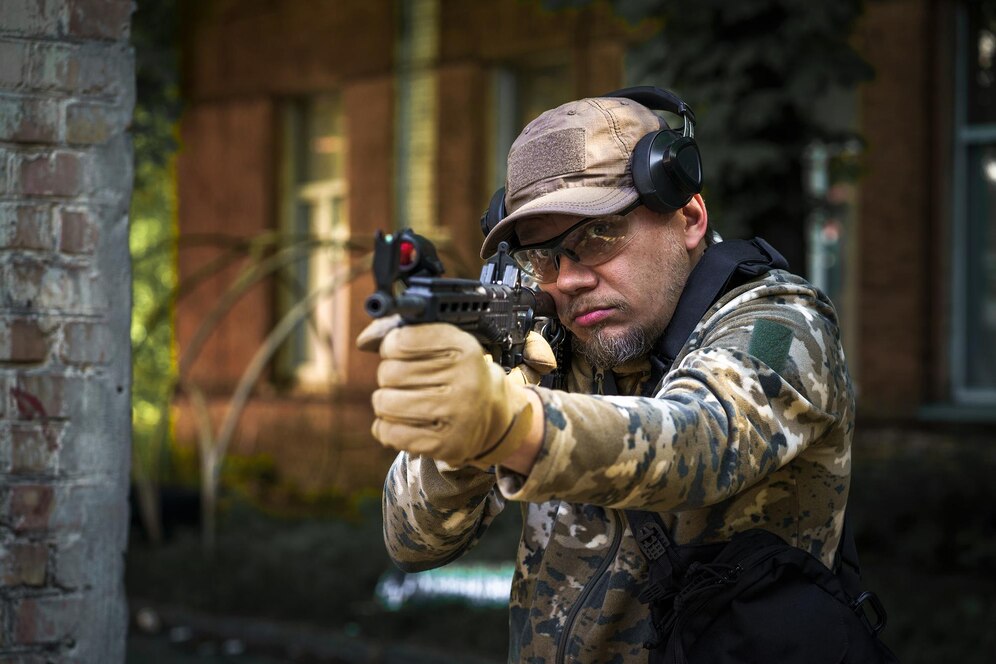If you’re new to firearms or looking to enhance your skills, handgun training is an essential step in ensuring you’re prepared, safe, and confident when handling a handgun. Whether for self-defense, sport shooting, or personal interest, proper handgun training is critical to mastering the use of firearms responsibly. In this comprehensive guide, we’ll walk you through the fundamental aspects of handgun training, focusing on safety, defense strategies, and techniques that all beginners should know.
1. Understanding Firearm Safety
Before picking up a handgun, it’s essential to understand and follow basic firearm safety rules. These rules aren’t just guidelines—they are life-saving practices that will keep you and others around you safe:
- Treat Every Gun as if It’s Loaded: Whether you’re familiar with the firearm or not, always treat it as if it’s loaded. This helps to eliminate the risk of accidental discharge.
- Keep the Muzzle Pointed in a Safe Direction: Never point the muzzle at anything you’re not willing to destroy. It should a lways be pointed downrange or toward the ground.
- Keep Your Finger Off the Trigger: Always keep your finger outside the trigger guard until you’re ready to shoot. This is one of the most common safety mistakes made by beginners.
- Be Sure of Your Target and What’s Behind It: Always identify your target and make sure there are no unintended objects or people in the line of fire.
2. Familiarizing Yourself with the Handgun
Before you start training, get familiar with the components of your handgun. Knowing the basic parts of the firearm helps you handle it better and identify issues that may arise during training:
- Barrel: The part through which the bullet exits.
Slide: (Semiautomatic guns only)The top part of the handgun that moves back and forth when fired. - Cylinder: (Revolvers only) The part that holds the bullets and rotates them in place when the trigger is pulled.
- Trigger: The mechanism used to fire the gun.
- Grip: The handle of the firearm.
- Safety Mechanism: A switch or lever that prevents the gun from firing unintentionally.
Understanding these parts will help you operate the handgun properly and address any malfunctions during training.
3. Proper Grip and Stance
Your grip and stance will have a huge impact on the accuracy of your shots and your ability to control the firearm.
- Grip: A firm but relaxed grip on the handgun is crucial. Make sure both hands are involved in gripping the gun. The dominant hand should wrap around the grip, while the support hand should fill in any gaps and provide stability.
- Stance: Stand with your feet shoulder-width apart, and bend your knees slightly for balance. The Isosceles Stance, where both arms are fully extended, is a great starting point for beginners as it offers stability and control. Another stance you may encounter is the Weaver Stance, where one arm is locked and the other is bent at the elbow.
4. Aiming and Sights
Proper aiming is essential for hitting your target accurately. Most handguns have iron sights, which are the front and rear sights that help you line up the target. The goal is to align the front sight with the rear sight, with the top of the front sight level with the rear sight’s top.
Make sure the front sight is clearly visible, and focus on it, rather than the target itself. This will increase your chances of hitting the mark.
5. Trigger Control and Follow-Through
Trigger control is an essential part of shooting accuracy. Rather than jerking the trigger, which could cause your shots to go off-target, apply steady pressure to the trigger with the pad of your finger.
Once you’ve squeezed the trigger, follow-through is also crucial. Maintain your position after firing the shot, keeping your arms extended and maintaining focus on the target.

6. Practicing Defensive Shooting Techniques
Handgun training for self-defense often involves practicing shooting in dynamic, real-world scenarios. Defensive shooting isn’t about being the fastest shooter but about being accurate and efficient under stress. A few important tips:
- Shoot from Cover: In real-life defense situations, you may need to shoot from behind cover. Learn how to safely position yourself to minimize exposure.
- Draw and Fire: Practice drawing your handgun from its holster quickly and shooting accurately. The goal is to do this with speed while maintaining safety.
- Movement: Shooting while moving is a skill you should develop for self-defense. Practicing moving side-to-side while shooting ensures you’re not an easy target in dangerous situations.
7. Range Time and Consistent Practice
Consistent practice at the shooting range is key to improving your shooting skills. Aim to practice a variety of scenarios, including shooting from various distances, firing at different speeds, and engaging multiple targets. Regular practice will help you build muscle memory, so your responses become second nature when it’s time to defend yourself.
8. Training for Situational Awareness
Handgun defense isn’t only about shooting—it’s also about being aware of your surroundings. Situational awareness can help you prevent dangerous situations from occurring. Stay alert to the people and environment around you and look for potential threats before they escalate.
9. Consider Professional Training
For beginners, attending a professional handgun training course is highly recommended. A certified instructor can provide valuable insights into the proper techniques, teach you to shoot more accurately, and help you develop the mental preparedness necessary for defensive scenarios.
10. Know the Legal Aspects of Handgun Ownership
Finally, it’s essential to understand the legal requirements and regulations for handgun ownership in your area. This includes knowing the laws about concealed carry, open carry, and the use of force in self-defense situations. Always stay informed and ensure you’re abiding by the law.
Conclusion
Handgun training for beginners is more than just learning how to shoot—it’s about mastering safety, developing accuracy, and preparing yourself for real-world defense situations. By focusing on safety, practicing regularly, and seeking professional training, you’ll build the confidence and skills needed to handle a handgun responsibly. Remember, continuous improvement and awareness are key to becoming proficient with your handgun and ensuring your safety and the safety of others.










